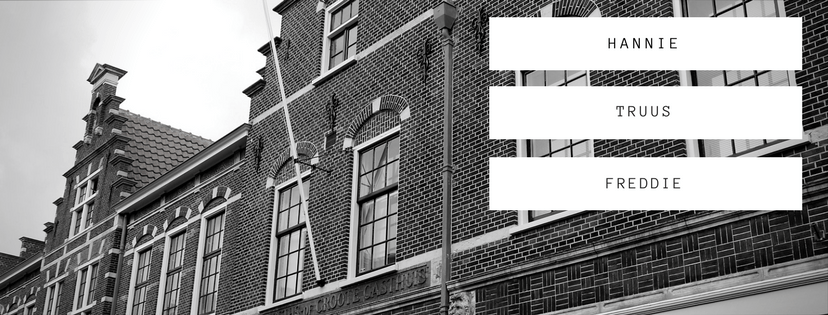Solidarity and equality. These are the values Hannie Schaft and the sisters Truus and Freddie Oversteegen stood up for during the German occupation of the Netherlands in World War II. On the occasion of the recently published book ‘Hannie’ by the historian Peter Hammann, the Museum Haarlem curated the exhibition Vrouwen in Verzet – Hannie, Truus, Freddie (Women in Resistance – Hannie, Truus, Freddie), which is dedicated to these three young women and invites the visitors to reflect upon the importance of taking action for moral reasons despite the risk of adverse consequences. Hammann’s book breaks with some of the myths about Hannie that were mainly created in the film ‘The Girl with the Red Hair’ (1981, directed by Ben Verbong).
Hannie Schaft was born in Haarlem, the capital city of North Holland, in 1920. Although Hannie and her friends were still teenagers when World War II broke out, they all experienced from a young age what political and social injustice meant. With the German occupation in 1943, students were required to sign a declaration of allegiance to the occupation authorities. Hannie, who studied law at the University of Amsterdam, became friends with Jewish students which made her feel strongly about actions against Jews. Like 80 percent of the other students, Hannie refused to sign the petition with the consequence that she no longer was allowed to continue her studies. This was when she began to take action. First, with small acts, working as a courier and helping to distribute the illegal newspaper ‘De Waarheid’ (The Truth). Later, she was responsible for sabotaging and assassinating various targets including Germans as well as Dutch Nazis.

The exhibition tells the story of resistance from the perspective of Hannie and her friends Truus and Freddie. Old photographs, student IDs, childhood drawings, hair accessories, handbags, and even Hannie’s pistol are on display and emphasise the fact that these young women were “normal human beings”. What distinguished them, of course, was their courage. The way in which the exhibition is created makes the story of these women approachable and reliable, especially for young people. In a sense, relevant questions regarding intolerance and discrimination, which arise in the face of today’s refugee crisis, are directed towards us as individuals. The exhibition shows that moral courage starts with us as individuals and that it is not an abstract phenomenon that refers to an anonymous entity.
On 21 March 1945, Hannie Schaft was arrested at a control post in North Haarlem. In her bicycle bags, soldiers found illegal newspapers. After long interrogations and torture, she was brought to the dunes of Bloemendaal and shot by two Dutch Nazis on 13 April 1945 – only three weeks before the war ended. Her friends survived the war and – to this day – continue to contribute to the remembrance of Hannie Schaft and the women in resistance during the German occupation. A monument that was created by Truus in commemoration of her friend was unveiled in the Kenaupark in Haarlem by Princess Juliana in 1982. In a recent interview, Freddie Oversteegen was asked whether she and her sister talked about the war a lot. She replied:
We never had to say “remember when,” because it was always at the top of our minds. (Freddie Oversteegen, 2016)

Querida Romina ,con gran interés leo tus artículos, en tu página Art Relevance, cuáles escribis de una manera sutil, perspicaz …
Gracias por compartir a través de tus artículos tú reconocida habilidad para expresar en tus escritos tus años de experiencia, también en este rublo! Saludos atentos, Gladys
LikeLike
Muchas gracias! Me alegro de escuchar que te gusta leer los artículos. Saludos, Romina
LikeLike
Hola Romina, muy interesante tu trabajo, es una página que va creciendo a traves de tu experiensa.
Te deseo que tengas mucho éxito.
Saludos Eduardo
LikeLike
Gracias por tu comentario! Espero que sigas leyendo con placer los posts de esta página. Saludos, Romina
LikeLike